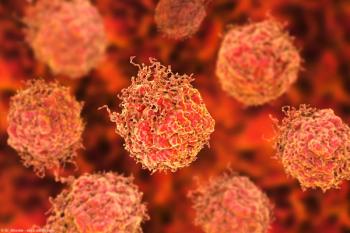
Physical activity may reduce women’s stone risk
Postmenopausal women may reduce their risk of incident kidney stone disease by engaging in even mild physical activity and avoiding excessive caloric intake, analyses of data collected in the Women’s Health Initiative (WHI) Observational Study show.
Seattle-Postmenopausal women may reduce their risk of incident kidney stone disease by engaging in even mild physical activity and avoiding excessive caloric intake, analyses of data collected in the Women’s Health Initiative (WHI) Observational Study show.
“The burden of kidney stones has increased dramatically over the past 15 years and is most pronounced among women. While obesity is a strong risk factor for kidney stones, we hypothesized that current energy intake and energy expenditure may alter any baseline risk imparted by BMI. The WHI database was a perfect opportunity for studying this idea,” explained first author Mathew D. Sorensen, MD, MS, assistant professor of urology at the University of Washington, Seattle.
“According to our findings, when it comes to the protective effect of physical activity, it is the amount of exercise and not the intensity that matters. Therefore, we do not need to ask women to run a marathon to decrease their kidney stone risk,” added Dr. Sorensen, who presented the findings at the 2013 AUA annual meeting in San Diego. The study was also recently
The relationships between energy intake and expenditure and kidney stone risk were investigated using data from 84,225 WHI participants who had no history of kidney stones at enrollment, correctly completed a food frequency questionnaire at baseline to determine caloric intake, and answered a question on incident stone development at annual follow-up visits. During a median of 8 years of follow-up (610,290 person-years), 2,392 women (2.8%) reported an incident kidney stone.
For the analyses, women were categorized into five dietary energy intake groups based on calibrated values of kcal/day (<1,800, 1,800-1,999, 2,000-2,199, 2,200-2,499, and ≥2,500) and into six physical activity groups based on calculations of metabolic equivalents per week ([METS/week] inactive, 0.1-4.9, 5-9.9, 10-19.9, 20-29.9, and ≥30). Regression analyses were performed adjusting for body mass index and a number of other known nephrolithiasis risk factors.
Using inactive women as the reference group, even the mildest amount of physical activity (0.1 to <5 METs/week) was associated with a statistically significant, decreased risk in stone formation of 16%. The magnitude of risk reduction rose as the amount of weekly activity increased, but plateaued at about 30% for women performing 10 or more METs/week.
Dr. Sorensen noted that 10 METs/week of physical activity is equivalent to 3 hours of average walking, 4 hours of light gardening, or 1 hour of moderate jogging.
No effect seen from exercise intensity
Exploratory analyses investigating a potential effect of exercise intensity showed no difference in stone risk among women doing mild, moderate, or strenuous activity, while the protective stepwise effect of physical activity was similar whether women were mild, moderate, or strenuous exercisers.
The impact of energy intake on incident stone risk was investigated using women with an energy intake of 1,800-1,999 kcal/day as the reference group. The analyses showed that the risk of developing a kidney stone was significantly increased in women with a daily energy intake of 2,200-2,499 kcal (26%) and in those consuming 2,500 kcal/day or more (42%). There was no significant increase in risk for women with a daily energy intake of 2,000-2,199 kcal nor any significant protection against stone formation in women with a calibrated energy intake <1,800 kcal/day.
In further analyses, the authors will be investigating whether intake levels of fiber, fruit, and vegetables influence stone risk. Additional studies are needed to determine whether the findings on increasing physical intake and energy intake also occur in postmenopausal women with a history of stones, younger women, and men, Dr. Sorensen noted.UT
Newsletter
Stay current with the latest urology news and practice-changing insights — sign up now for the essential updates every urologist needs.


















